
Hong Kong (CNN)Hong Kong‘s brief respite from violence has come to an end, with police firing tear gas at demonstrators as the city’s protests enter their 12th weekend.
Protesters attempted to tear down or dismantle the lampposts, while others gathered on the streets and formed barriers. Protesters have been seen with a slingshot, iron bars and bricks, while riot police fired back pepper spray and tear gas, making it the first time in 10 days since tear gas was fired.
“Everyone is tired,” wrote chief executive Carrie Lam on her Facebook page today. “Can we sit down and talk about it?”
She also pointed to social and economic frustrations, echoing some protestors’ complaints. “The public’s dissatisfaction may also be due to deep social contradictions in different areas such as politics, economy and people’s livelihood. While we are calling for a cessation of violence, we must also provide a way out for solving the deeper “dead knot” of society,” she wrote.
The stand off brings an end to a week of relative calm in Hong Kong, which had seen numerous clashes between protesters and police since early summer. Last weekend, police fired no tear gas, and an estimated 1.7 million people braved the heavy rain and heat to march peacefully along Hong Kong’s streets.
In an apparent effort to forestall planned protests,the city’s subway operator MTR said on Saturday that it was suspending services between seven subway stations in the protest area, to “ensure the safety of passengers and our staff.” On Friday night, MTR also announced it had been granted an interim injunction to restrain people who were acting unlawfully, willfully obstructing or interfering with the running of the station, damaging property, or using threatening or offensive language.
Hong Kong’s subway stations have been sites for multiple protests and confrontations this summer. Earlier this week, protesters piled debris into a barricade and staged a silent sit-in at Yuen Long subway station, to mark one month since a mob attacked protestors, bystanders and journalists in that station. Police have also been accused of firing tear gas within a subway station.
Hong Kong has been protesting for almost three months. The demonstrations were initially sparked by a now-suspended bill that would allow fugitives to be extradited to China, where there is a separate legal system. Since then, protesters’ demands have expanded to include an inquiry into alleged police brutality and universal suffrage in the city, which currently only has partial democracy.
Changing tactics
Over the course of Hong Kong’s summer of dissent, protestors have organized several large-scale marches, including some with estimated turn-outs of over 1 million. Protesters have tried a number of techniques, including storming the Legislative Council building and leading widespread strikes around the city.
On Friday, thousands of people stood in lines stretching around Hong Kong to form a human chain — a homage to the Baltic Way, which took place on the same date, 30 years ago. On August 23, 1989, millions of people in the Baltic States of Estonia, Latvia and Lithuania formed a 600km (372 miles) long human chain to demand independence from the Soviet Union.
Hong Kong’s airport was expected to be targeted on Saturday morning for a second time this month, but plans to block transport going to and from the airport didn’t come to fruition.
To forestall issues, Hong Kong’s Airport Authority had warned in a statement Friday that blocking roads connecting to the airport may constitute unlawfully obstructing the airport, meaning anyone who does so could be subject to imprisonment or a fine. It also placed ads in local papers Friday, encouraging young people to love and protect the airport.
“We sincerely call for all young people who love Hong Kong in their heart not to participate in or support any action that disrupts the airport’s normal operation or damages the airport’s international image,” the ads read, adding that airport disruption could lead to the unemployment of around 100,000 people who depend on the airport to make a living.






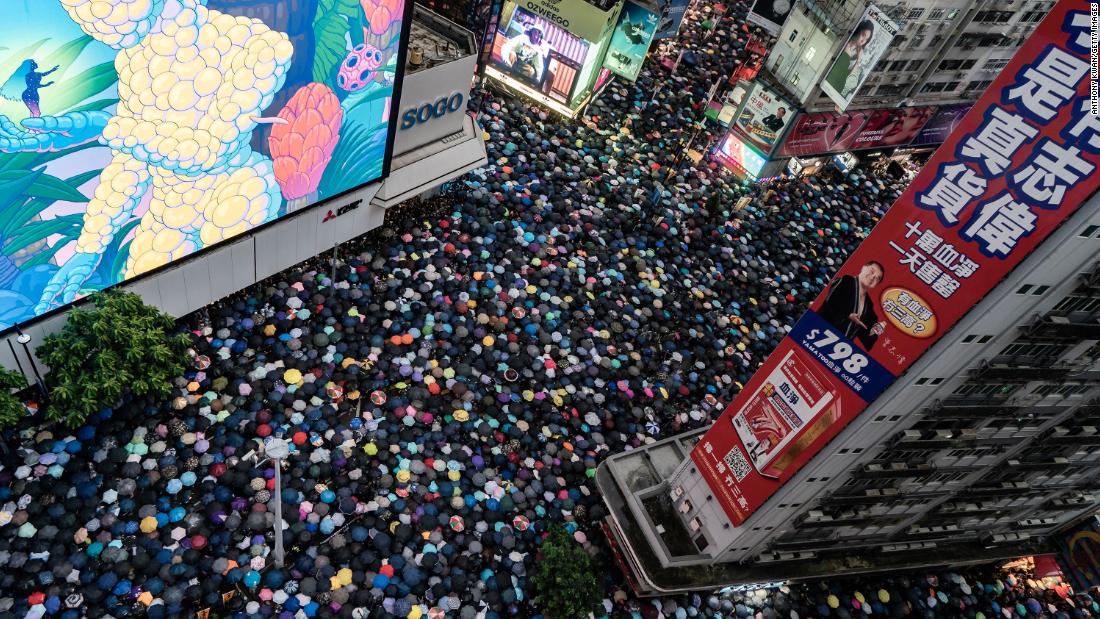

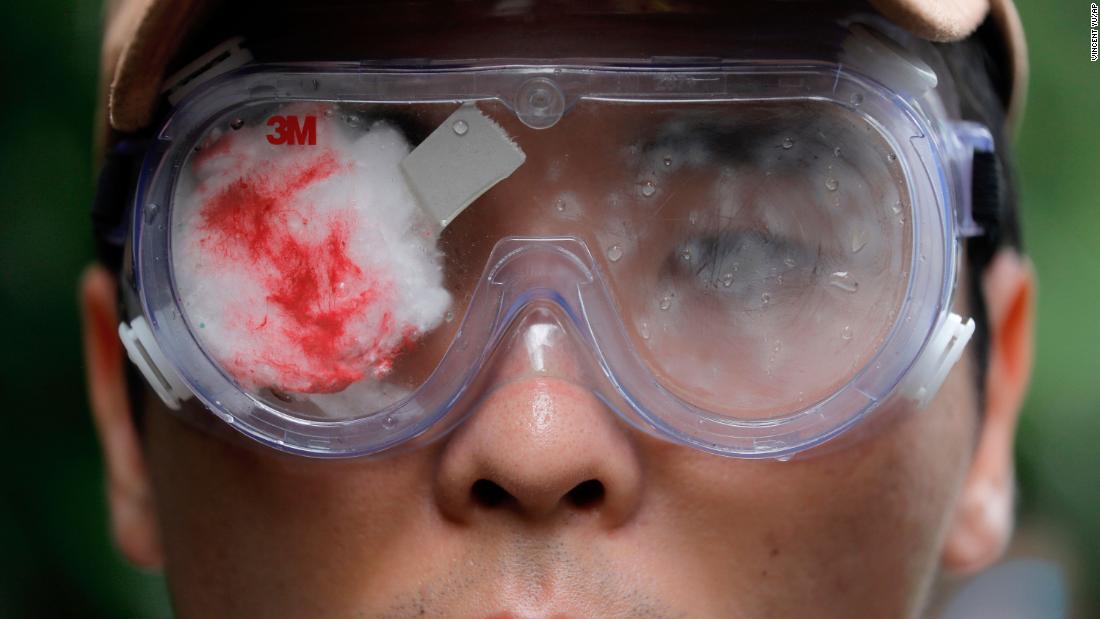





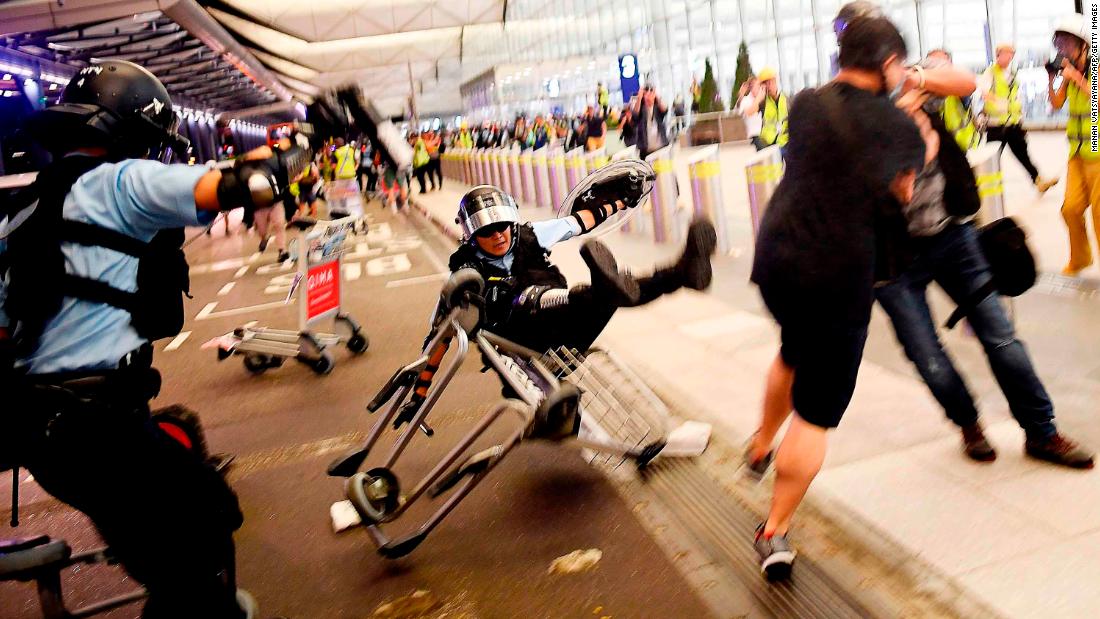




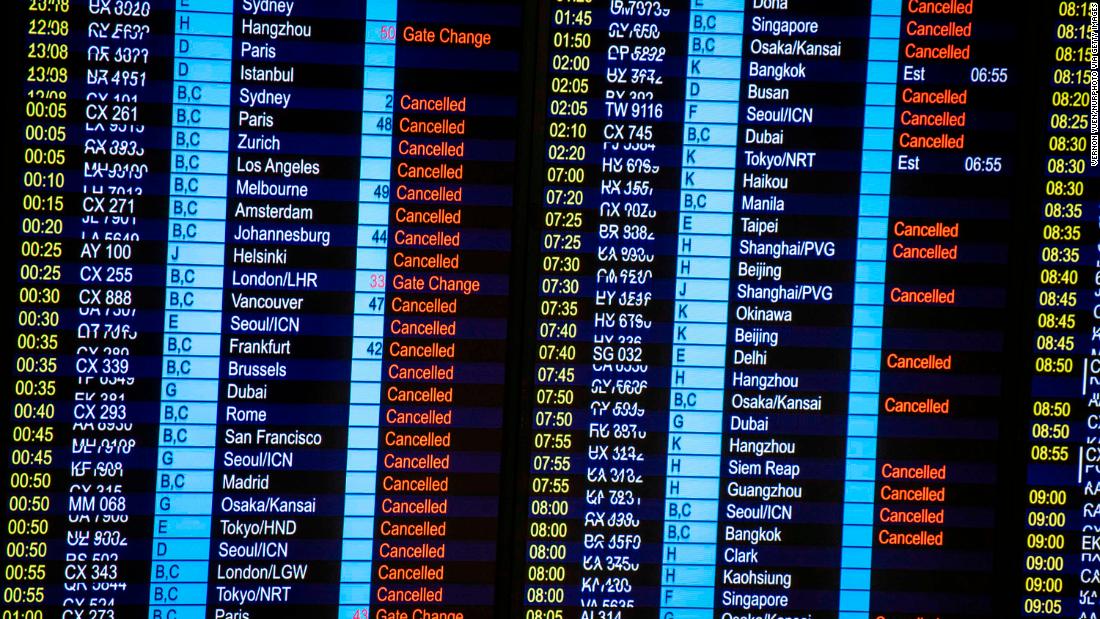





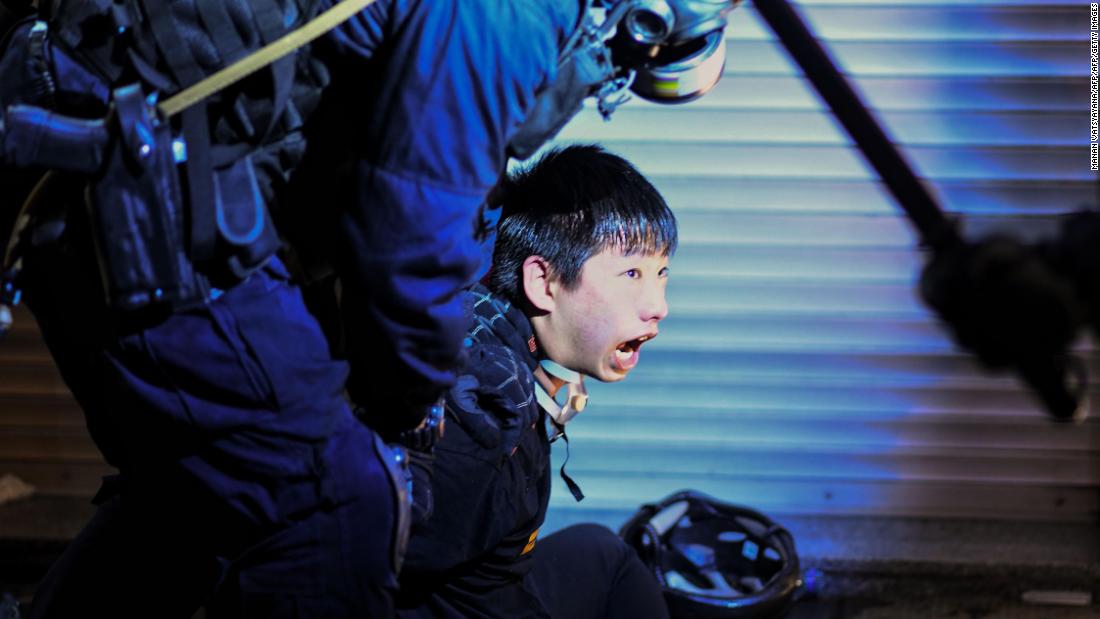




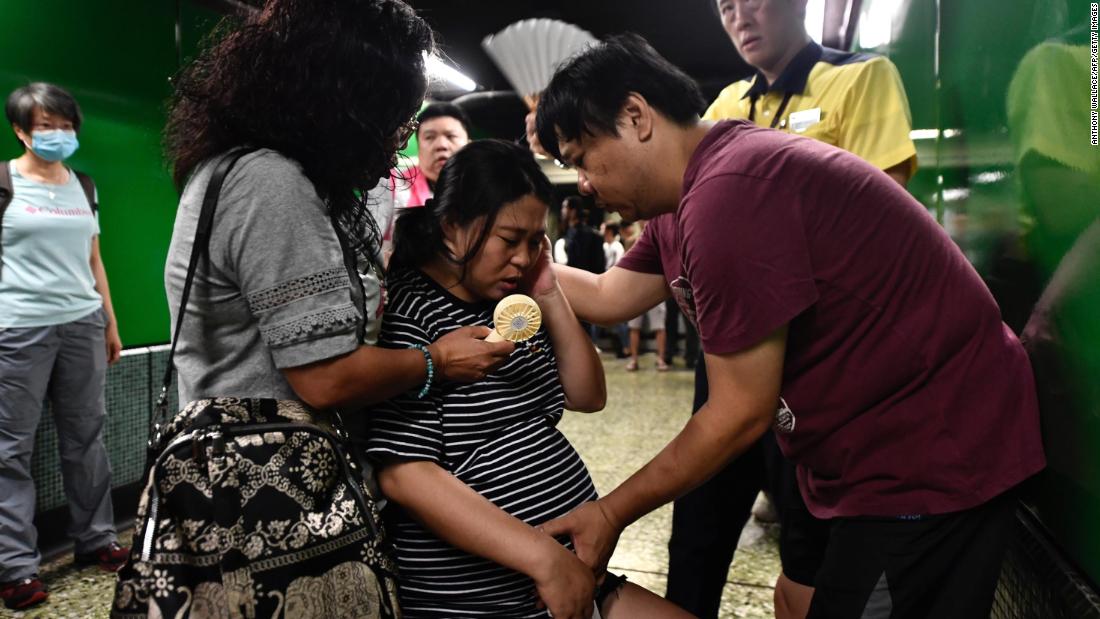



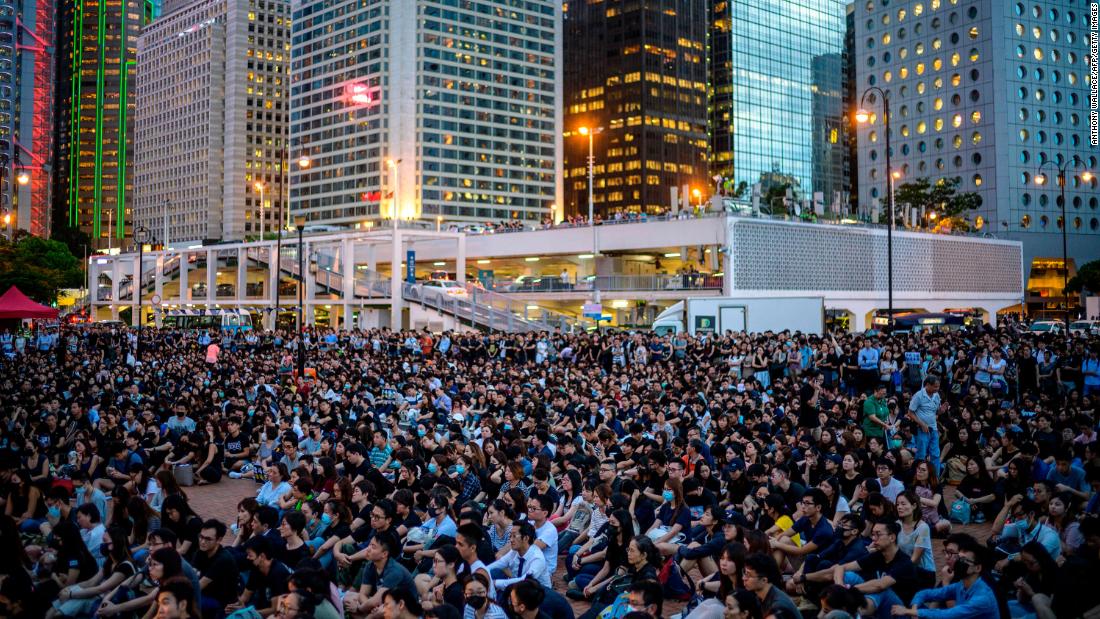








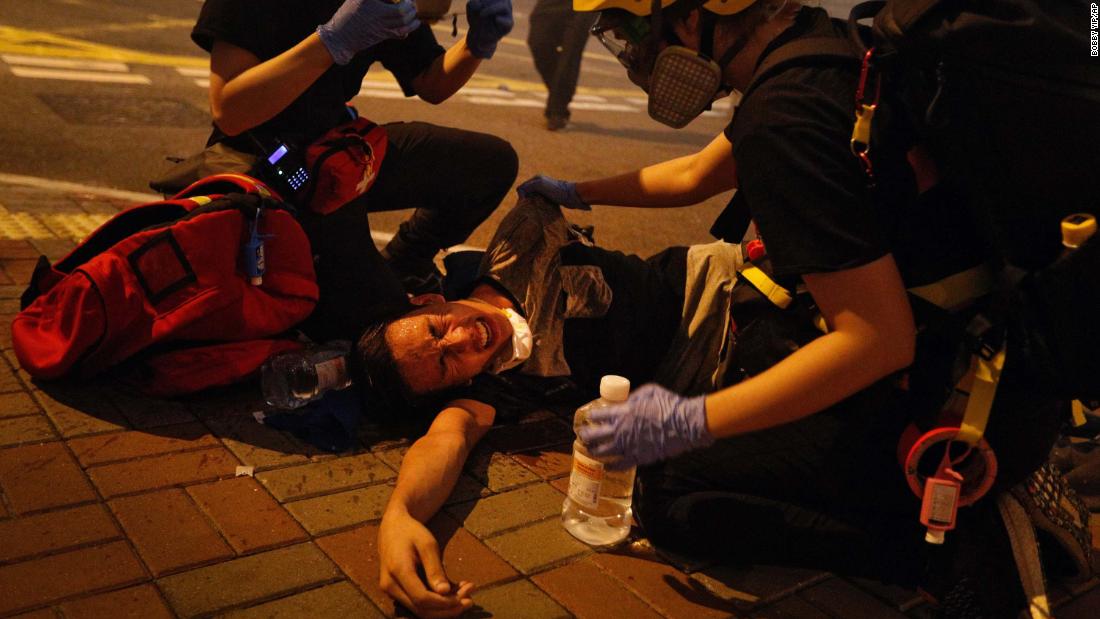

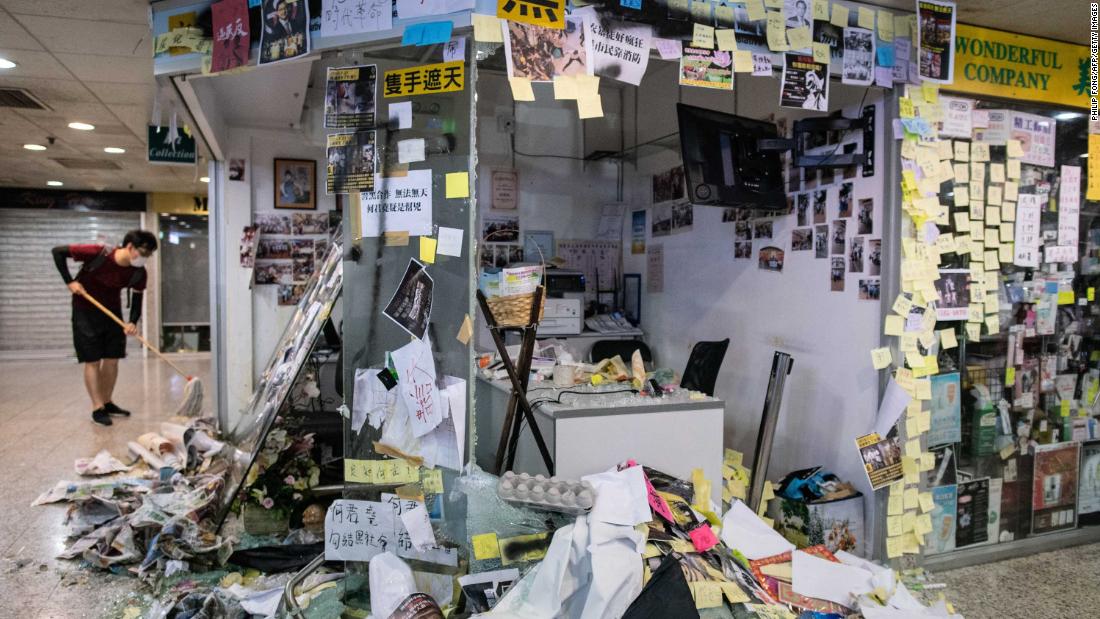



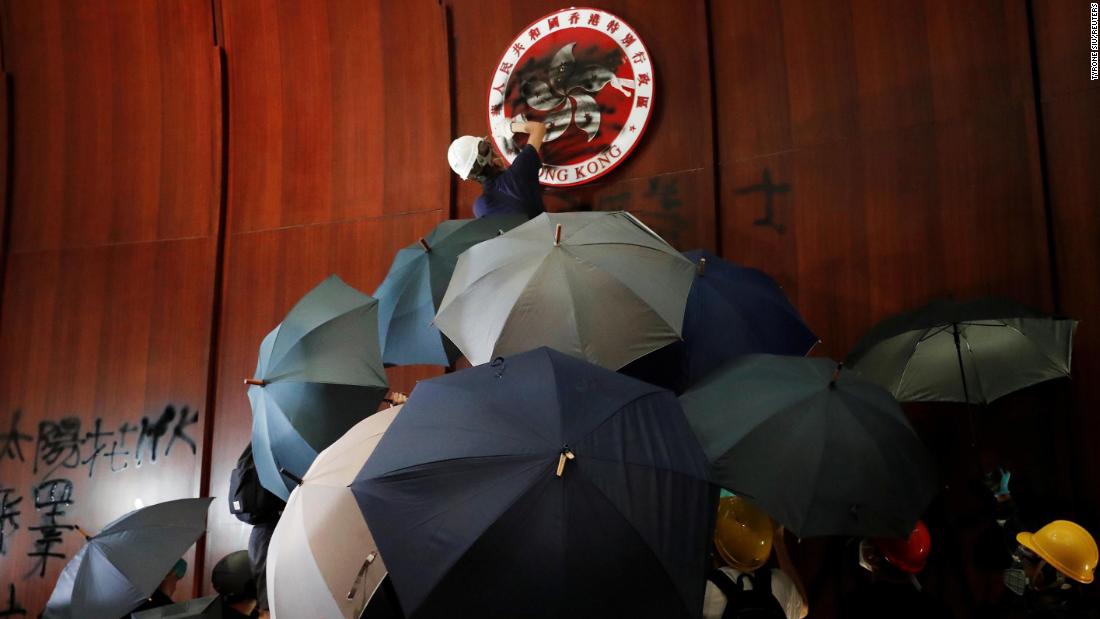










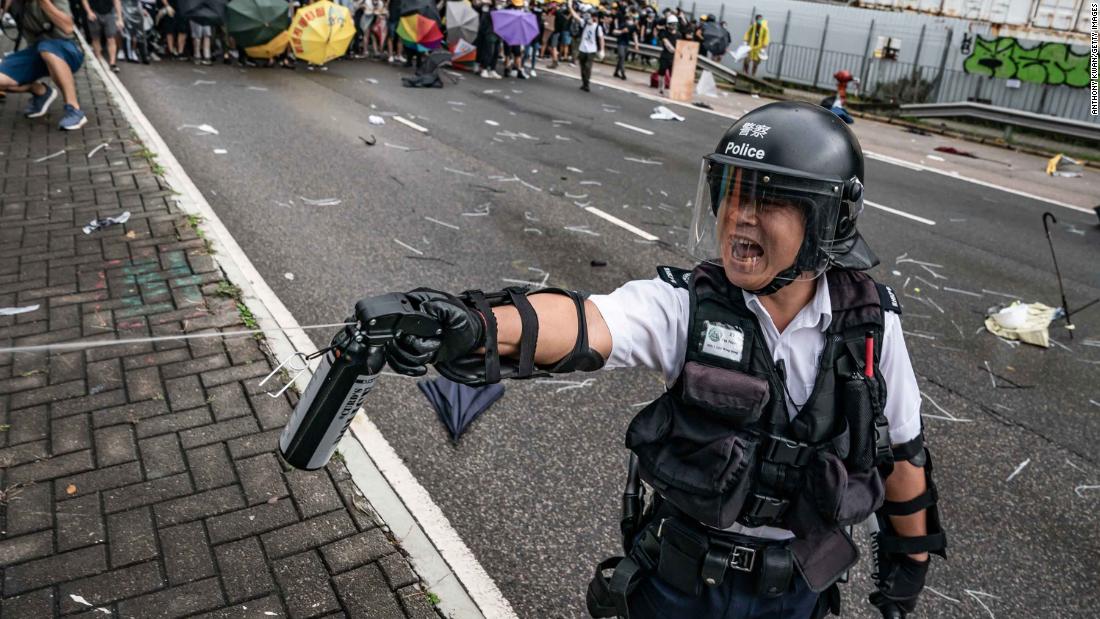


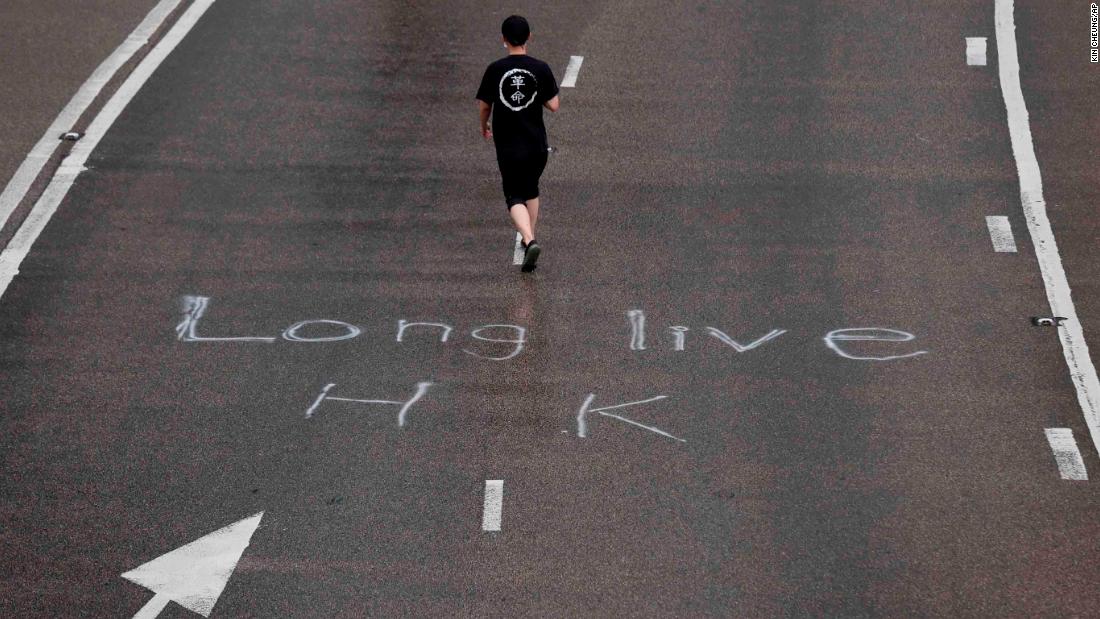










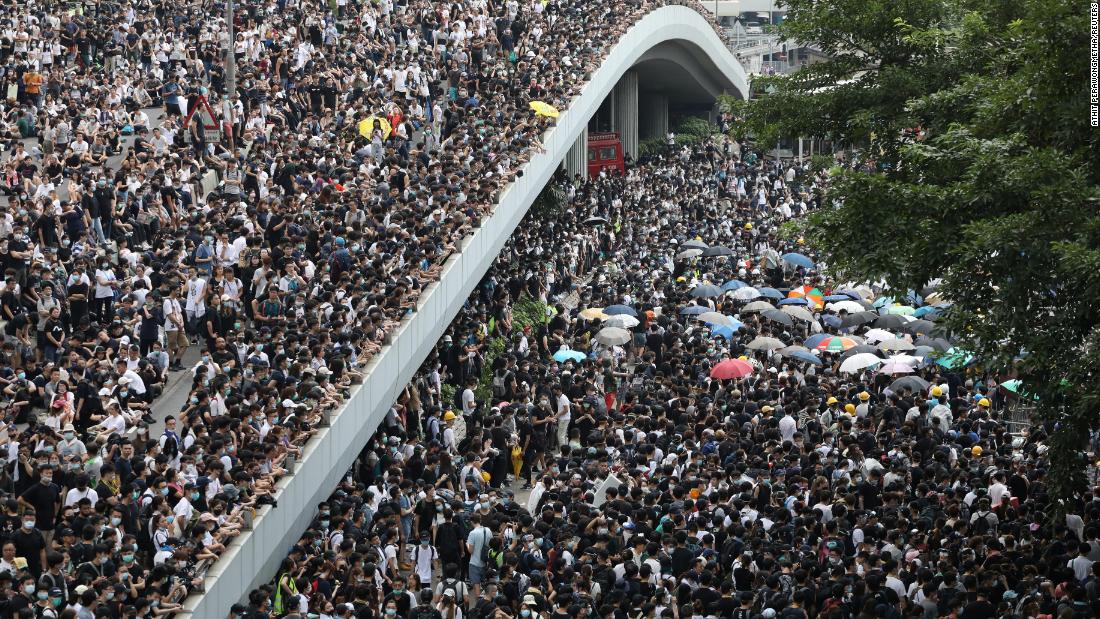


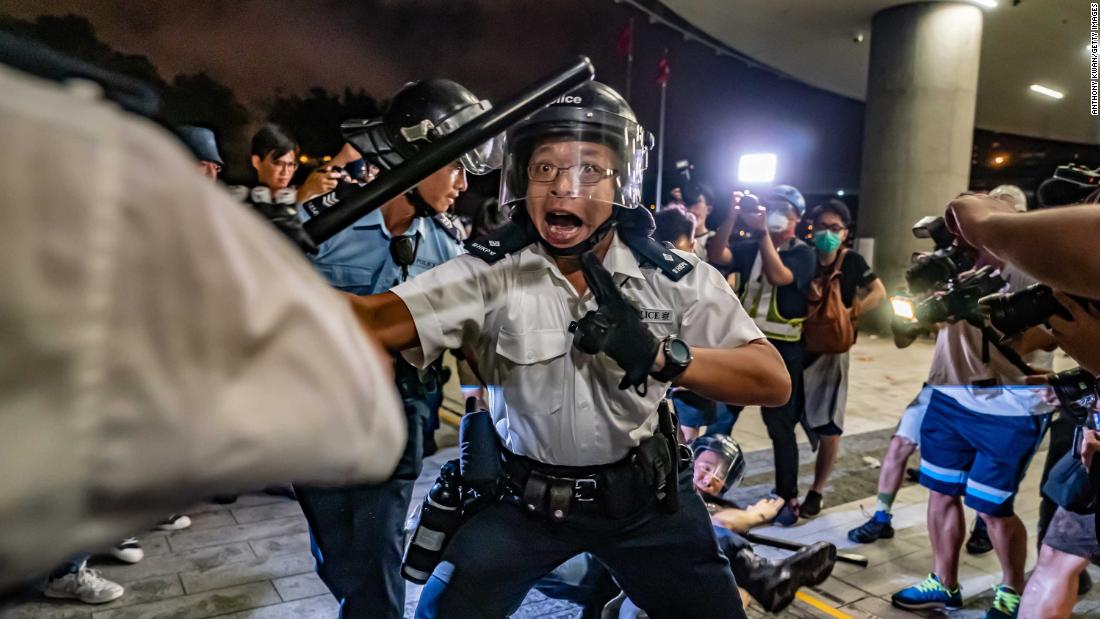


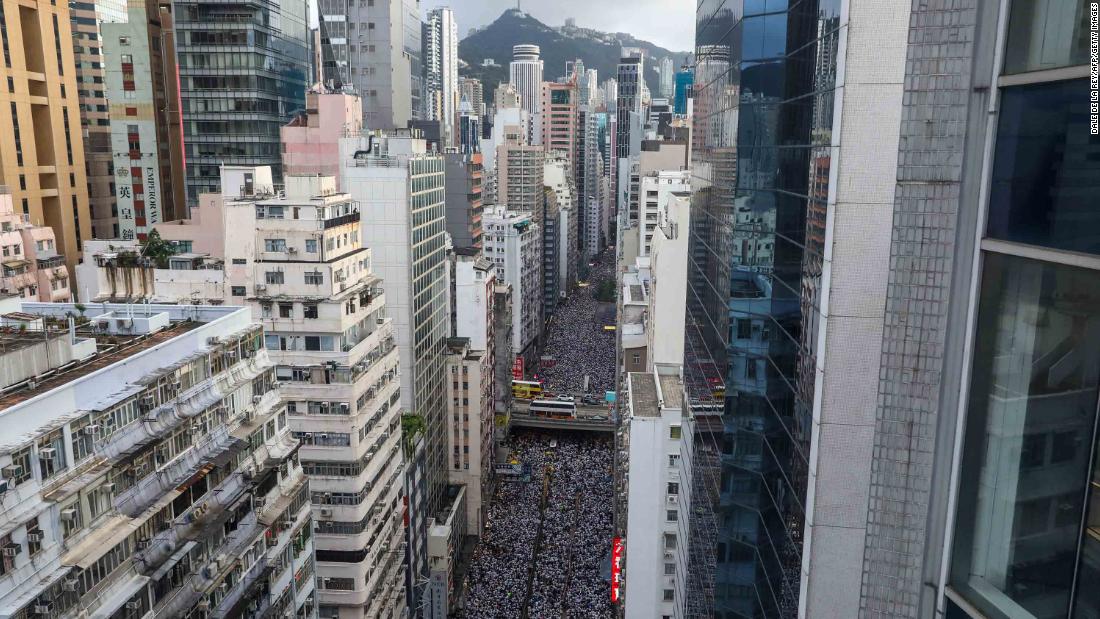

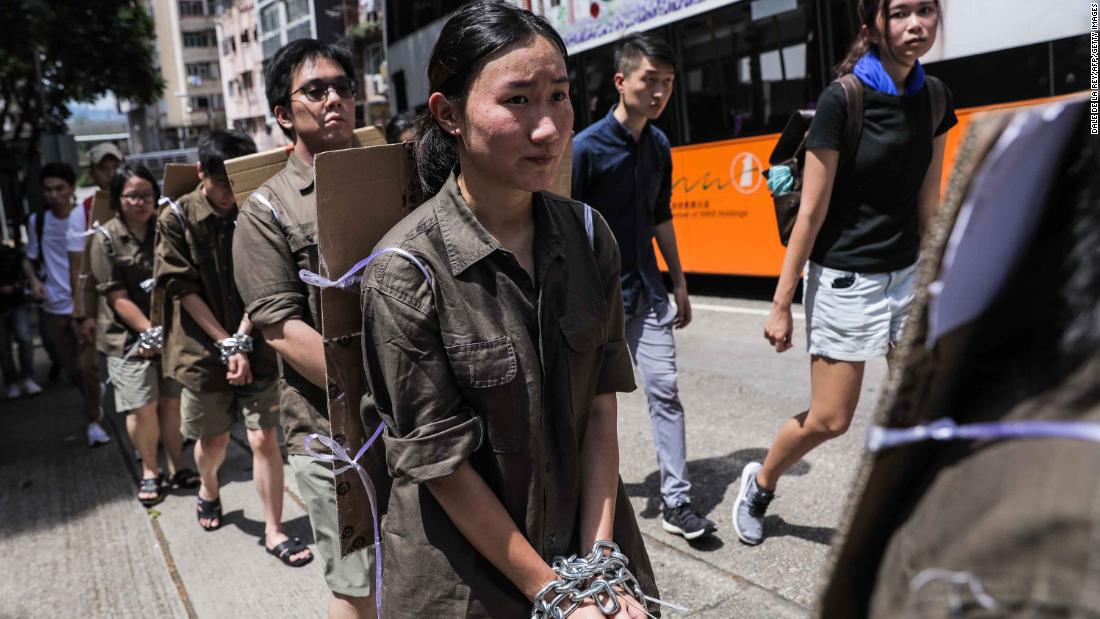
They called the tactic “a kind of psychological war,” and said they had arrested 16 people on suspicion of disclosing personal data without consent and causing harm, and unauthorized access to a computer.
They also defended the force’s use of plain-clothes policemen, saying they were being used to target some “radical violent elements.”
But at Friday’s human chain, many protesters insisted that the movement was peaceful, and rejected police’s depiction of them as violent.
“(The government) are saying we aren’t peaceful protesters, they just make up a story. Some people really believe that. They try to attack us. Sometimes it’s devastating,” said Felix Wong, 33, who began to cry as she explained how upset she was by the government’s stance.
“I know a lot of people just like me, we see the news and read some articles, we just break into tears easily these two to three months,” she said.
The wider picture
Beyond the battles between police and protesters, there has also been concern for how the ongoing protests are affecting the city’s economy.
Hong Kong’s economy grew by just 0.6% in the second quarter compared to the same time last year, the weakest quarterly figure in a decade. On Thursday, global banks in Hong Kong placed advertisements in several local newspapers, calling for a peaceful resolution to the standoff between the city’s government and pro-democracy protesters.
Last week, Hong Kong’s property billionaires and the city’s richest man, Li Ka-shing, affirmed their support for the government and called for calm in the streets.
There are also concerns about China’s response to the protests. Also on Saturday, a 28-year-old Hong Konger was released after being held in administrative detention by China for 15 days, on unclear charges. His detention had come amid reports Chinese immigration officials are regularly searching travelers’ phones and bags as they cross the border for evidence they have taken part in protests.
The Canadian Consulate in Hong Kong has suspended all work travel to mainland China for local staff. A government source who was close to the decision-making said they believed the move to be a prudent precaution at this time.
No sign of ending
For now, there’s no sign that the protests are ending.
Carmen, a 38-year-old lawyer at Friday’s protests, described herself as a “recent convert” to the movement — she was pro-establishment before she joined the protests for the first time this month, inspired by the passion she was seeing among the city’s young people. She wore a surgical face mask to protect her identity, and would not give her full name for fear of retribution from the police.
Fellow protester Spencer, a 33-year-old hotel worker who was also wearing a face mask and would not give his full name for the same reason, said he hoped the protests would end with city leader Carrie Lam responding to the protesters’ demands.
“Why is she making us come out every day, every night, every weekend — we have no normal Sundays anymore because of these events,” he said. “But we have to come out and stand for ourselves, or else we are going to lose our home.”
Read more: https://www.cnn.com/2019/08/24/asia/hong-kong-protests-subway-weekend-intl-hnk/index.html











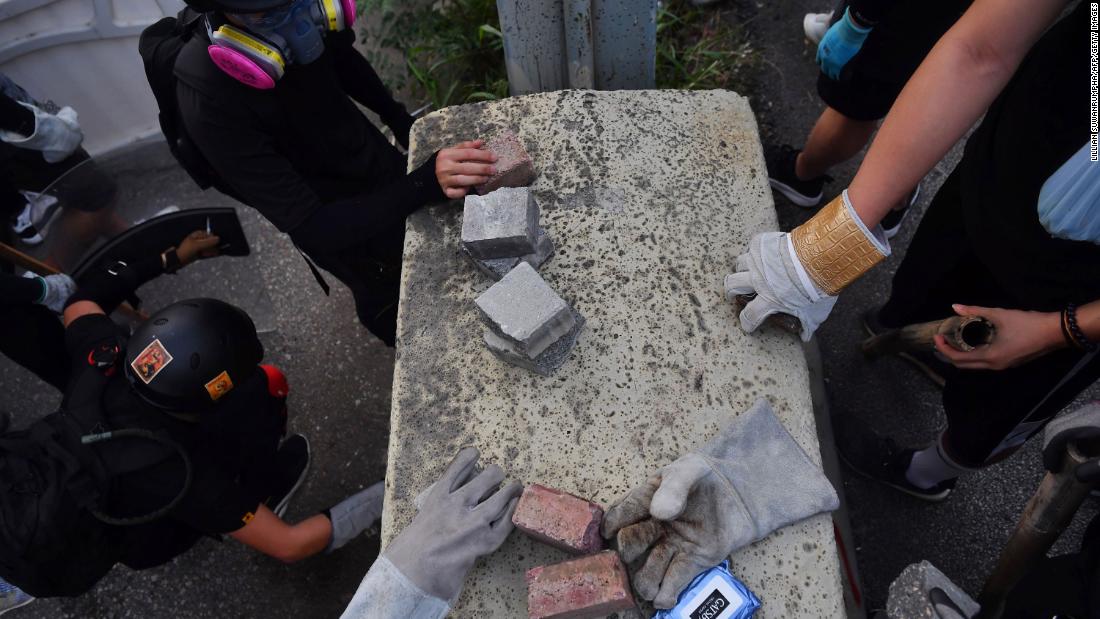
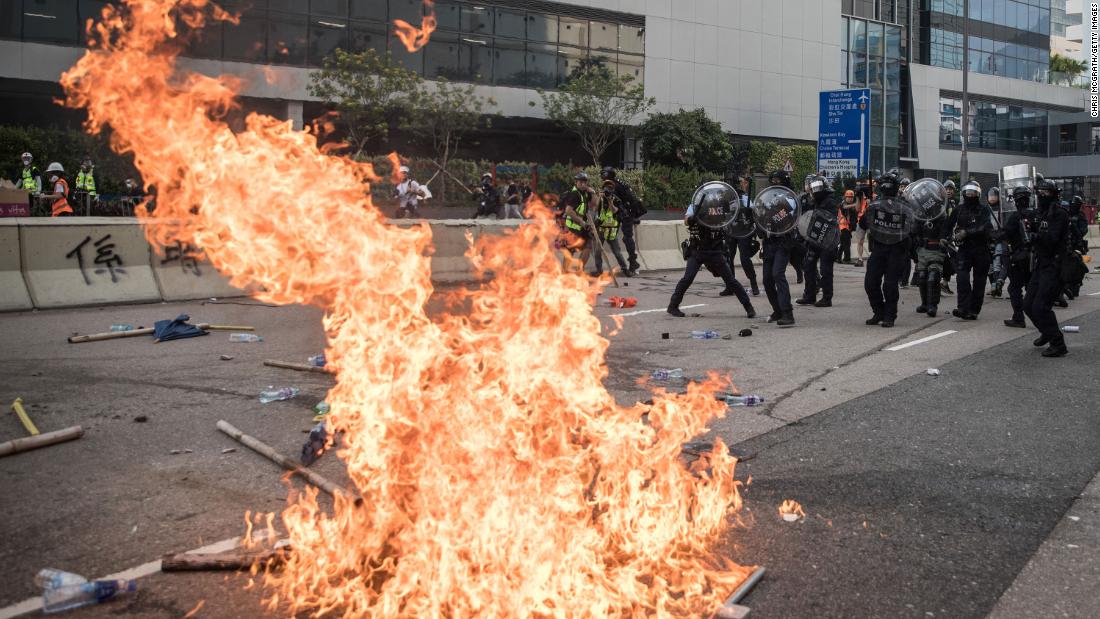

Recent Comments